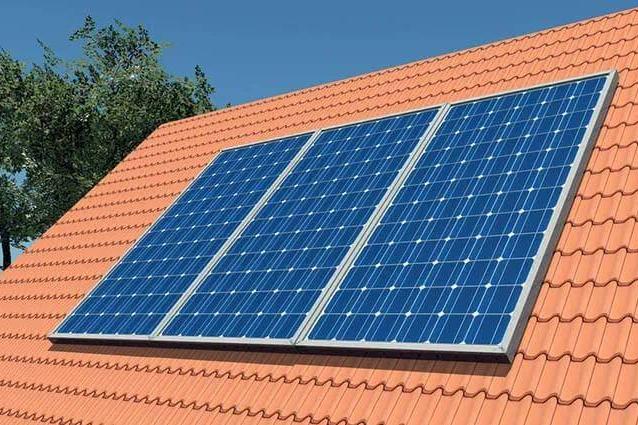The optimal orientation and inclination of a solar system influences the PV yield. However, certain deviations from the ideal state are possible without significant yield losses. In this article, you will learn everything you need to know about the orientation and inclination of a PV system.
First things first
The optimal alignment
Solar panels generate the most electricity when they face south.
East-West photovoltaics
An east-west system is good for self-consumption because it produces most of its electricity in the morning and evening.
The optimal incline
Solar modules achieve the highest yield when facing south and at an inclination of 30 to 45 degrees.
photovoltaics on the north side
Photovoltaics on the north side generate 30 to 40 percent less electricity than those facing south.
What is the optimal orientation of a solar system?
The optimal orientation for a solar system is south. The sun's rays are at their highest in the south and the solar panels produce the most energy. Orientations of up to 30 degrees to the east or west are also suitable and cause little loss of yield.
When aligning photovoltaic systems, the azimuth angle This indicates how much the deviation from the optimal orientation to the south (0° azimuth angle) is.
On flat roofs, the highest output is achieved with a south-facing orientation. However, east-west orientations offer an alternative for more even power generation throughout the day. This can result in an additional yield of up to 40%.
What is the optimal inclination of the PV system?
The optimal inclination of the PV modules is 30 to 35 degrees. In general, the inclination angle of the solar system should be between 20 and 60 degrees. A lower inclination benefits the performance in summer. A higher inclination angle improves the yields in the winter months.
Photovoltaic systems achieve the highest yields when the sun's rays hit the solar cells at a 90-degree angle. In practice, however, this angle is rarely achieved because the sun moves and is at different heights throughout the day and year. In Germany, it is highest at midday in summer and lowest in the morning and evening in winter. The tilt angle of 30 to 35 degrees for south-facing systems is therefore a compromise that guarantees the highest yields throughout the year.
The interaction of orientation and inclination is crucial
The expected yields depend on the orientation and inclination of the PV modules. The following table shows the interaction between the two variables.
As you can see, small deviations from the optimal orientation and inclination (south, 30 to 35 degrees) only reduce the PV yield slightly. A PV system facing south still achieves over 90% of the maximum yield at inclinations of 10 or 60 degrees. The yield losses are also limited for a PV system facing southeast or southwest, provided the inclination is between 10 and 60 degrees. PV systems facing north produce the lowest yields, although their use can still be worthwhile in certain cases.
rule of thumb: The more the PV system deviates from a southerly direction, the more advantageous a low tilt angle is. A west or east facing system with a tilt angle between 0 and 20 degrees still achieves high yields of over 85% of the maximum yield.
Sometimes it is worth combining two sides - as with east-west solar systems. This not only increases the overall yield, but also increases your own consumption.
What impact does the focus on self-consumption have?
Due to rising electricity costs, self-consumption of solar power is becoming more and more worthwhile. This is why the east-west orientation is becoming increasingly important.
Photovoltaic modules achieve the highest yield when facing south, but most of the electricity is fed into the grid. Why? Most solar power is generated at midday, when most households have the lowest consumption. An east-west orientation solves this problem, as it achieves the highest yields in the morning and evening - exactly when household electricity consumption is highest.
Tips for aligning a PV system
When determining the optimal orientation and inclination of a PV system, you should also pay attention to other factors:
- shading: A shaded module only uses diffuse solar radiation and produces less electricity. This leads to yield losses. When planning a photovoltaic system on your own roof, you should therefore carry out a shading analysis;
- self-cleaning: At an inclination of more than 12 degrees, the PV modules clean themselves. Water can drain away and dirt or snow is washed away with the rain;
- tracking systems: With a tracking system, the PV system adapts to the angle of incidence of the sun. Depending on the system, vertical and/or horizontal tracking is possible. This enables PV systems to produce an additional yield of up to 35%.












